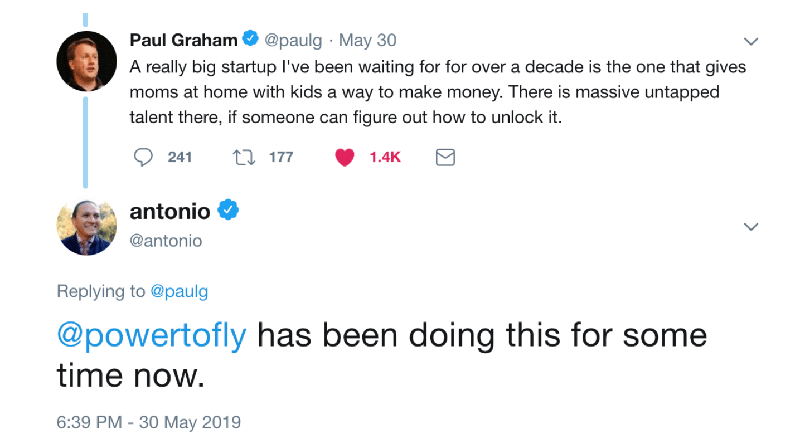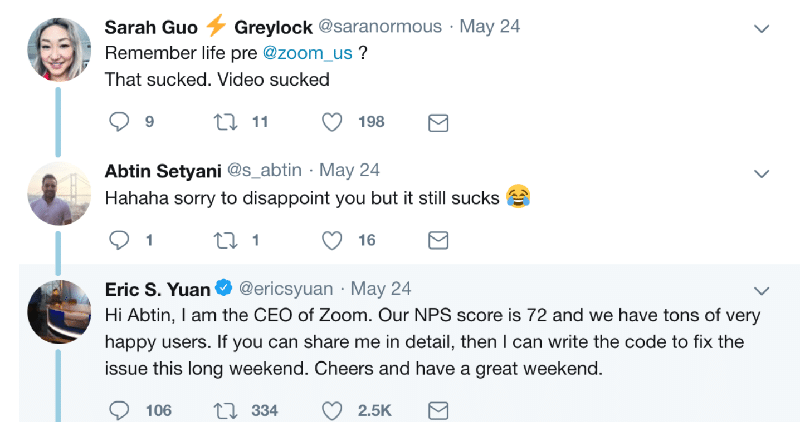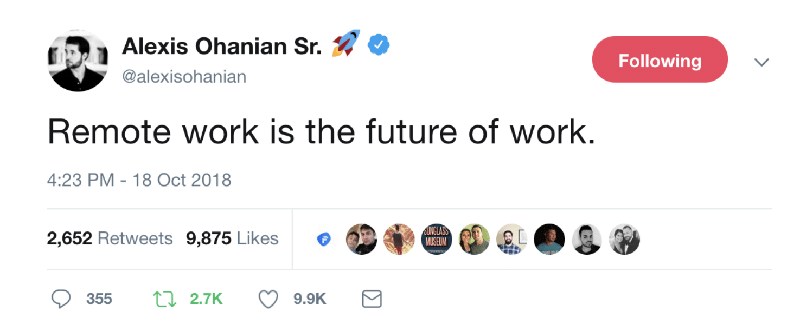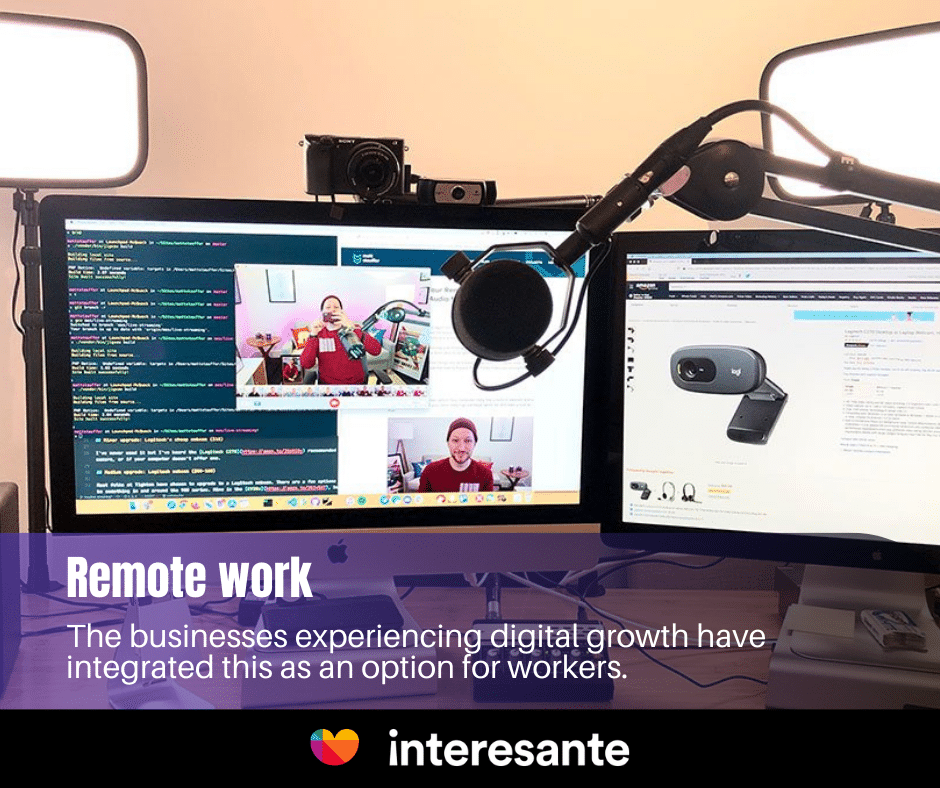Editor-in-Chief @ Interesante
The employees of WordPress, one of the largest internet companies in the world, don’t have to show up to the office, ever. Their software powers roughly 35% of all websites worldwide as of 2020.
According to QZ, Automattic’s employees are spread across the globe in 62 countries, from Argentina to Zimbabwe. Last year, it closed a San Francisco office because not enough employees were showing up. Instead of offices, Automattic provides workers with a $250 a month stipend to spend at co-working spaces, or in a Starbucks. Google joined the bandwagon and just released a study on remote workers, and the central conclusion was that they found “no difference in the effectiveness, performance ratings, or promotions for individuals and teams whose work requires collaboration with colleagues around the world versus Googlers who spend most of their day-to-day working with colleagues in the same office.”

The image above shows WordPress’s distributed workforce. This is evolving from task-oriented outsourcing to value-add product development, and the companies embracing remote work are reaping the benefits.
Remote work is going mainstream
Remote, a book by Jason Fried, the founder of Basecamp, was a hit within the nascent practice of remote and distributed teams. The book analyzes the trends and cultural changes necessary to shift from a physical office to a distributed team. It also gives you great insight into the company’s culture that created the first scalable project management tool and its preference for remote teams.
But the topic of remote work is not without controversy in Silicon Valley. Influential founders and VCs continue to speak up in favor and against remote work. In 2014, an epic discussion on Twitter between Matt Mullenweg, founder of WordPress, and Paul Graham, founder of YCombinator brought to light the contrasting attitudes to the forefront. Fast-forward to 2019, YC is now funding startups focused on building remote teams and the infrastructure to support them, such as Gigster and Pilot. Despite this trend, a pattern-matching exercise on a consolidated list of YC companies yielded only one result for the word “remote,” 22 for “automate,” and 13 for the word “teams.” This analysis shows that while many YC startups focus on automating and measuring software development, very few focuses on building the infrastructure that would empower the socialization of remote teams to make them more efficient.
Lately, Paul Graham has been dabbling on the topic again. During a tweetstorm, Paul mentioned that he’s been looking for a startup that unlocks the power of stay-at-home moms. PowerToFly and Andela came to mind right away because these companies have been helping workers the option to plug into the global economy while working remotely.

PowerToFly provides a pipeline of vetted women in tech and across digital. According to their website, PowerToFly was launched by Milena Berry and Katharine Zaleski in 2014 to connect Fortune 500 companies and fast-growing startups with women looking to work for companies that value gender diversity and inclusion. PowerToFly is building the platform to propel diversity recruiting and hiring.
Remote Teams Empowered By Technology
As video technology improved and messenger apps flooded the market, collaboration across geographies became much easier to implement, which might be one of the reasons why Paul Graham initially opposed remote teams. Luckily, technology is getting much better with the advent of AR and VR, and Graham is accepting it as part of a modern workflow.
Slack catapulted remote work to the forefront. Founded by Steward Butterfield, Slack is a tool that brings company communication together under one single interface. Slack’s growth is the fastest ever seen for a business tool.
Zoom, the hottest video startup to IPO in the first half of 2019, was able to acquire users at a staggering pace. Yes, the technology is certainly better than antiquated systems such as Webex and GoToMeeting, but their user acquisition growth is mainly due to the evolution of cultural norms and faster adoption rates by younger users. Zoom has made collaboration much better and enjoyable, simply by putting the customer first.

Remote Work, Millenials, and Gen Z
Millennials and Gen Z are embracing remote work in droves. Software engineers have been working remotely for decades. The model has finally evolved from remote hands deploying software tasks to remote and distributed Millennial brains collaborating to solve problems –– a true global hivemind collaborating through digital signals.
Alexis Ohanian, Millennial extraordinaire and Reddit founder, tweeted that remote work is the future of work. His portfolio at Initialized Capital features at least three startups focused on that market.

Millennials have adopted remote work as part of their DNA. While many companies continue to require employees to be physically present at a location, the businesses experiencing digital growth have integrated this as an option for workers.
Tapping Into A Global Talent Network
When Tangelo was looking for a remote team, I had the pleasure of speaking with Andela before their growth spurt. Their approach feels authentic, and the team appears to be well-trained. They see their remote workforce as an asset to be developed.
Andela is a company that outsources software work to Nigeria, Kenya, and Rwanda. Their series D round reached $100M at a $700M valuation with The Chan Zuckerberg Initiative as an investor, and Al Gore as the lead.
After decades of feasting on top-of-the-line, revenue-generating markets choke-full of software engineers, Google, Facebook, Apple, WeChat, Alipay, and other tech giants are starting to look outside their geographies. Silicon Valley is at the epicenter of startup innovation, with a track record that remains unchallenged. Still, the next wave of technological innovation will happen outside Silicon Valley, and these companies are getting ready for it.















